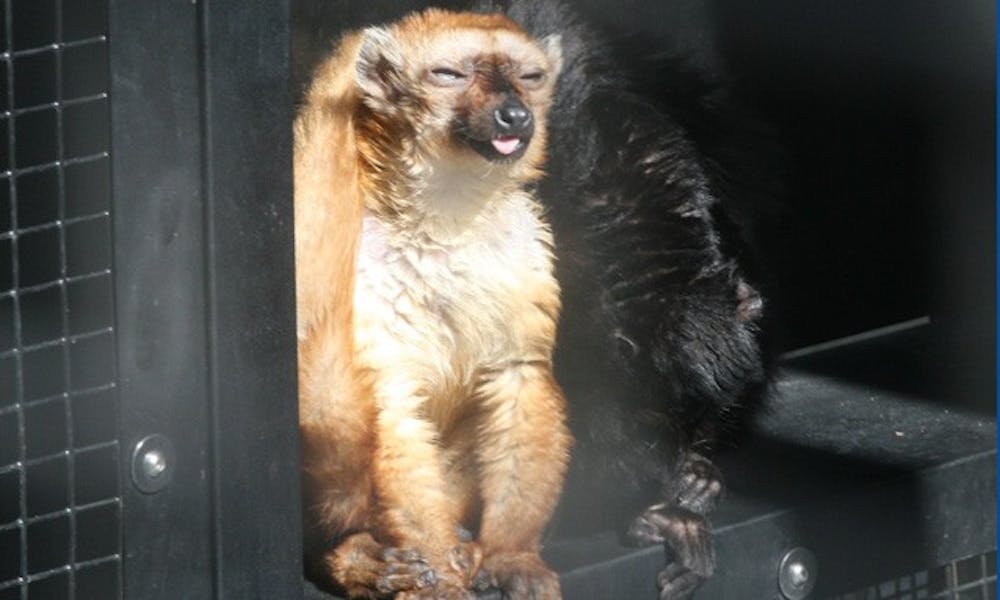Fresh, local fruits and vegetables will soon be on the menu for the small and furry residents of the Duke Lemur Center.
In an effort to increase its sustainability, the Duke Lemur Center created an organic garden in May to provide food for more than 200 animals. Plans for the garden began in December 2010 when the center received a $5,000 grant to offset the cost of the lemurs’ food.
The garden represents the center’s commitment to sustainability, said Amanda Wilkins, garden manager and a senior at North Carolina State University. In addition, the center recently created two new energy-efficient buildings.
“Given that we house the largest colony of critically endangered primates in the world, we are ever aware of the need to commit to environmental sustainability,” Center Director Anne Yoder said, adding that the center’s sustainability policy is largely a reaction to the threatened natural habitat of lemurs.
Conservation Coordinator Charlie Welch and Development Officer Lari Hatley approached Wilkins to help with the project. Welch had already been growing fruit around the center prior to the full-fledged garden.
The garden features squash, blueberries, herbs and several other vegetables and is tended in part by student volunteers from the nearby Duke School, a private preschool, elementary and middle school in Durham, Wilkins said. Although the center plans to expand the garden, Wilkins noted that the garden will never be the lemurs’ sole food source due to space constraints and North Carolina’s growing season.
Hatley also noted that the garden is an important educational tool for the center’s environmental commitment.
“We work every day to further educate students, the general public and our Malagasy partners in sustainable practices,” Hatley wrote in an email June 23. “We wanted to ‘walk the walk.’”
The garden is only one of the center’s many sustainable policies, which include the use of rainwater collection systems and the use of food scraps as mulch for the garden, Hatley said.
The center has recently replaced all of the light fixtures in its older buildings with more energy-efficient technology, wrote Operations Manager Greg Dye in an email June 23. The center’s landscaping is also shifting away from a traditional design that features lots of grass and trees in order to reduce its carbon footprint.
Two new LEED Silver-certified primate buildings opened in early May, Dye added. The releasable building houses 60 lemurs and the semi-releasable building houses 80 lemurs. Both buildings allow free-range capacities across certain acres of Duke Forest.
According to the center’s website, the buildings’ sustainable features include windows that allow natural light to pass through and reduce the need for electricity, water fixtures that reduce the buildings’ water usage by 15,000 gallons a year and motion sensor light switches that save 20 percent more energy. During construction, more than 20 percent of the building material was from recycled materials and 70 percent of construction waste was recycled.
“We also try to use sustainable practices in every area, from using donor funds, to purchas[ing] an electric cart to transport visitors with mobility issues, to using 100 percent recycled fibers and soy inks in our print publications, while moving toward more and more electronic communication,” Hatley said.
In addition to the garden and buildings, the center also has a new tour path, which brings visitors through an open enclosure—allowing a barrier-free path between lemurs and guests, Education and Development Associate Niki Barnett said.
Barnett added that the center is recently became home to several baby lemurs.
“This year we have been very successful with breeding our lemurs,” Barnett said. “We have infants from a variety of species, and all are thriving.”
Get The Chronicle straight to your inbox
Signup for our weekly newsletter. Cancel at any time.

